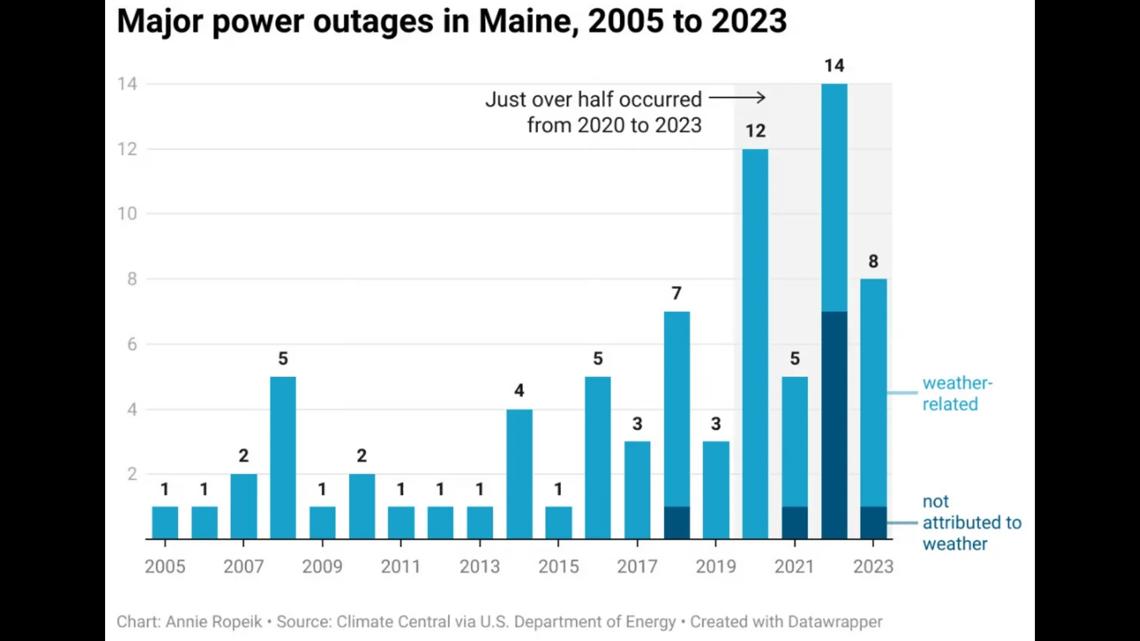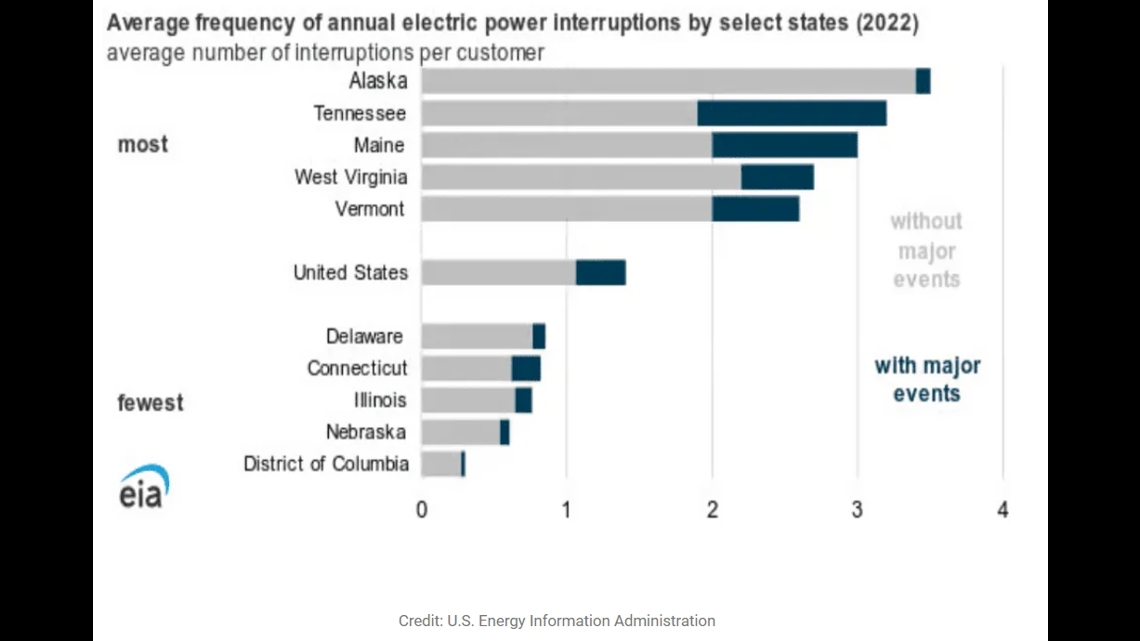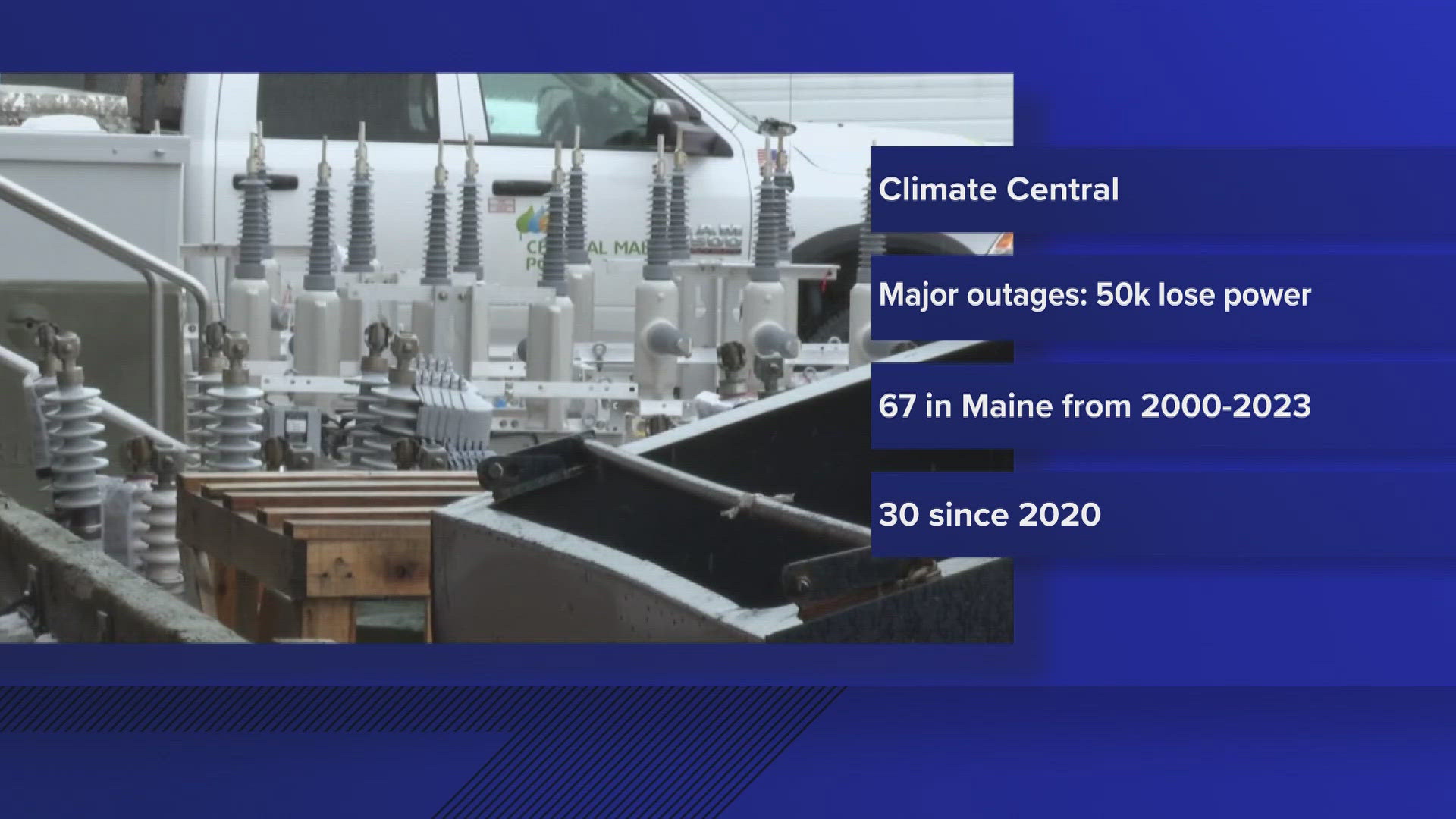MAINE, USA — A new analysis shows that more major power outages across Maine, the Northeast and the U.S. are happening as a result of bad weather.
The data from the nonprofit Climate Central shows an aging power grid under pressure as climate change brings more extreme storms in all seasons.
“Major outages are events that affect at least 50,000 customers (homes or businesses) or interrupt service of 300 megawatts or more,” Climate Central says in a release about the analysis, based on federal data from utilities’ required reports of these large outages.


The analysis found that 80% of such events from 2000 to 2023 were weather-related, with a twofold increase from 2014 to 2023 compared to 2000 to 2009.
Severe storms (other than tropical cyclones) and winter weather accounted for nearly three-quarters of these outages. Hurricanes and tropical storms accounted for 14% of outages, though they marked some of the longest-lasting interruptions, Climate Central says.
Maine doesn’t make the top 10 when it comes to states with the most weather-related major outages, according to the Climate Central analysis. The top honor goes to Texas, with 210 major weather-related outages in the past 20+ years.
But a quick breakdown of major outages affecting Maine (either alone or along with other New England states) in this same period shows a striking increase.


Maine also ranks high overall for outages of any size and cause.
Data from the federal Energy Information Administration put Maine in the top five for both the longest and most frequent outages in 2022:


“A higher average frequency of outages, unlike average duration, tends to be associated more with non-major events,” the EIA says, noting that heavily forested states tend to see the most outages per customer. “Power interruptions resulting from falling tree branches are common, especially because of winter ice and snowstorms that weigh down tree limbs and power lines.”
The federal data that Climate Central analyzed shows a range of non-weather causes for outages nationwide, from vandalism to technical glitches.


As Maine’s largest utility, Central Maine Power has taken its share of criticism for its response to outages in recent years. The storms in January and December, for example, left thousands in the dark and cold for days.
The utility is trying to invest in a more resilient grid. A $30 million federal grant announced last year could help the power system “self-heal” in outages, better containing disruptions before they can spread — part of efforts to “strengthen our state’s electrical system so it can handle increased threats from climate change,” CMP president Joseph Purington said at the time.
Grid modernization takes many forms, from circuit upgrades to better meters and new kinds of time- and technology-based rates, not to mention new poles, wires and tree-trimming approaches.
All of these changes are designed to make it easier to bring more variable, localized renewable energy online, while hardening that more flexible, variable grid to increasing weather extremes.
This story was originally published by The Maine Monitor, a nonprofit and nonpartisan news organization. To get regular coverage from the Monitor, sign up for a free Monitor newsletter here.

